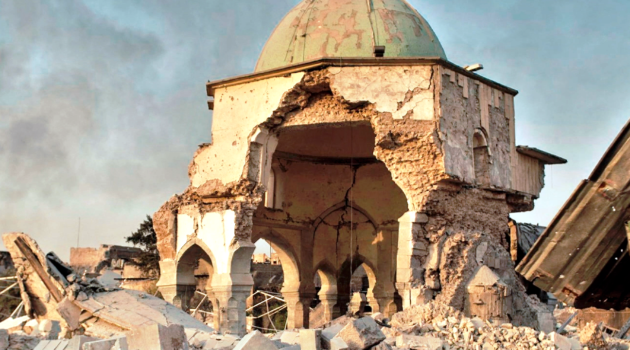Can a video game reclaim centuries’ worth of lost cultural heritage in the Middle East? Microsoft’s Minecraft Education Edition is being used to do just that, in league with UNESCO and schools around the world.
History Blocks takes advantage of the educationally oriented Minecraft platform to build virtual versions of ancient monuments — starting with sites that were destroyed by the Islamic State group in Syria and Iraq, and by the Taliban in Afghanistan.
The project was conceived and developed by Agencia Africa in Brazil, and put to its first test this February at Escola Bosque, a private school in São Paulo.
“It is surprising to see the level of the students’ engagement in the History Blocks project,” Escola Bosque’s pedagogical director, Silvia Scuracchio, said today in a news release. “At the same time that they solve complex geometry, logic and abstract challenges, it’s possible to see how they get involved with the culture and history behind the monuments and their destruction. For many of them, it was their first contact with concepts such as cultural destruction and ideology oppression.”
Students aged from 9 to 13 built up their models from historical images of the Temple of Bel, the Monastery of St. Elian and the entrance to the ancient city of Aleppo in Syria, as well as the Mausoleum of Imam Awn al-Din and the Al-Nuri Mosque in Iraq, and Afghanistan’s Bamiyan Buddhas.
Since February, the History Blocks project has been picked up by schools in more than 30 countries using the Minecraft Education Edition.
“Technology is a tool to transform education and bring to life methods that used to be unthinkable when it comes to teaching,” said Daniel Maia, manager for academic projects at Microsoft Brazil. “The project on UNESCO’s world heritage sites opens the door for students all over the world to study important monuments of our history.”
Minecraft and History Blocks are great teaching tools, but if you’re looking for high-fidelity models of heritage hotspots ranging from ancient Egyptian temples to Paris’ Notre Dame Cathedral, they’re covered by other software and survey programs.
The International Council on Monuments and Sites, a U.N. advisory panel also known as ICOMOS, is one of the leaders in the effort to document cultural sites. Over the past few years, ICOMOS’ Project Anqa (from the Arabic word for “phoenix”) has been conducting surveys of sites in Syria, starting with six representative buildings in Damascus. You can check out the virtual 3-D models online.
A historical conservation initiative called CyArk is playing a key role in 3-D documentation, for Project Anqa as well as dozens of other survey projects around the world. CyArk’s detailed digital scans feed into Google Arts and Sciences’ Open Heritage Project. For a powerful demonstration of the technology, check out CyArk’s scan of Mount Rushmore National Memorial in South Dakota. (But make sure your computer is powerful enough for the task.)
Could virtual models provide enough information to rebuild lost monuments? Historians and architects certainly hope so: They’re banking on surveys of Notre Dame, including a monumental 3-D laser scan and photogrammetric surveyconducted several years ago under the leadership of the late art historian Andrew Tallon, to serve as a guide for the reconstruction ahead.
